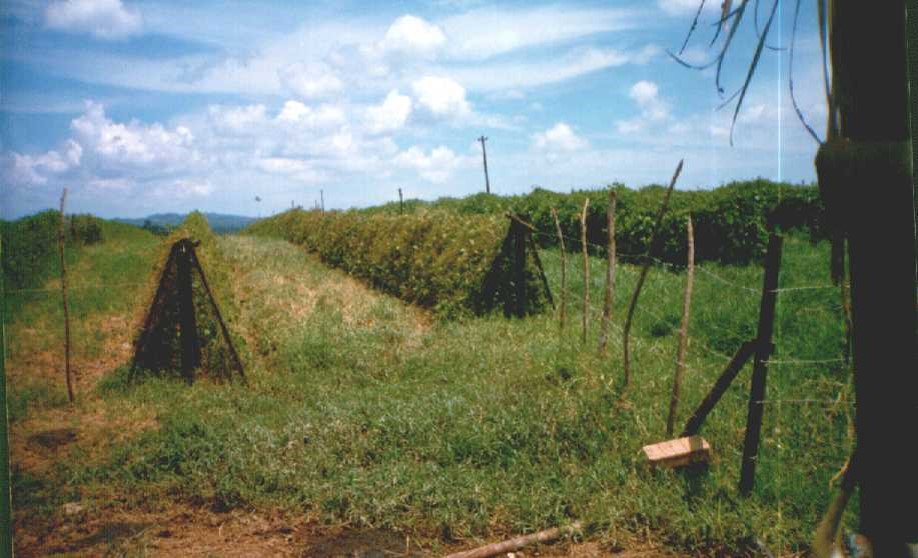With the aim of developing agroecological technologies that promote an endogenous and sustainable development of agricultural production that guarantees agri-food security, then, a series of alternatives for the management of pastures in livestock ecosystems are based for the management of bovine livestock for the production of milk, meat or dual purpose.

The first purpose is to promote the diversification of livestock farming systems, in which there is a variety of animal and plant species that allow generating synergy in the agroecosystems, from the biological point of view this model is oriented to sustainability, due to the multiple interactions that are generated producing inter specific reactions.
Without further ado, let's start mentioning and describing the alternatives that can be implemented in livestock systems under an agroecological approach.
- Agro-silvopastoral systems
Through this system, it is sought to include forage bushes of the legume family, which provide a greater amount of biomass with high nutritional value for livestock, together with other benefits that contribute such as improving the physical chemical characteristics of the soil and protects them from erosion, generate a microclimate, among others. On the other hand, the inclusion of forest trees that allow the availability of the timber resource that generates inputs to the system.

- Association of grasses and legumes
The interaction that is generated between the species of grasses and legumes is of great value, since they could increase the production of meat and milk with an adequate management of the locally available resources.

- Construction and operation of pedestals
This technology can be developed in order to implement protein banks with creeping legume species, since the productions are based on a high availability of legumes and grasses, with a high nutritional value in a stable way throughout the year, which allows to support high animal load and productivity per hectare. The pedestals serve as a support for climbing legumes, protecting the growing points of the animals.

- Planning and organization of paddock rotation systems
In order to carry out an adequate and sustainable management of the paddocks, rational management practices should be adopted in which the biological cycles of both plant and animal species are respected, according to the following aspects:
- Design and Process. Planning in the geographical space of the production unit (plan) and grazing systems, depending on the potential capacity of the agro-ecological and investment conditions, to know load and bearing capacity, to know the species of pastures that are available for planning, to identify the strengths and weaknesses that allow to facilitate a better management and the use of them.
- Method of grazing. The grazing methodology that would be applied is the systematic rotational grazing based on standardizing the size of the paddocks, it is a technical way to make the use of the pasture more efficient and to organize the grazing of the herds according to their nutritional requirements, these systems being of greater control in their maintenance.
- Grazing modules. The number of modules will be in relation to the number of herds and the grazing method.

- Support infrastructure. This infrastructure refers to the adequate access of the animals to water sources, protein bank, foraging associations, pedestals, and management facilities, which should be common to the grazing areas, in order to reduce investment expenses.
- Maintenance. This maintenance is basically referred to the practices of pasture and seedling protection, pasture fertilization, management and control of pests, diseases and weeds.
- Follow-up. To implement this monitoring, a digital record of all the paddocks must be implemented within each of the modules. This implies keeping control of the use of the paddocks, established maintenance practices and agroproductive variables.
Dear readers, in order to promote this type of alternatives the subject of training is central to the productive processes, for this it is important to create a research center to apply technological innovation to the increase and efficiency of meat and milk production considering the environmental impact, to the genetic improvement of herds and to the improvement of animal nutrition. Promoting the University-State Institutions- Producers linkage. In this sense, lines of research can be generated on agroecological planning and values, agroecological management of soils for livestock use, ecological control of insects, diseases and spontaneous vegetation, evaluation of seeds and organic fertilization.
Thank you for reading our article, until a next installment.
Preston, T. y Murgueitio, E. (1994). Strategy for sustainable livestock production in the tropics. 2da. Edition. Cali, Colombia: Claridad.
Simón, L. (2012). From pasture monoculture to silvopastoring: The experience of the EEPF "Indio Hatuey" Silvopastoring. In Leonel Simon (Ed.) A new concept of grassland. Matanzas: EEPF "Indio Hatuey".
Segovia, D. and Ortega, G. (2012). Agroecology, the path to sustainable development. Basis of Social Research. Assumption. Paraguay.

Sources
- Photography and images:All photographs and images are the property of the author @amestyj
- Agrotecnia banner: made by the author @amestyj with own images
- Hive Banner: Designed by the author @amestyj with image owned by hive.











